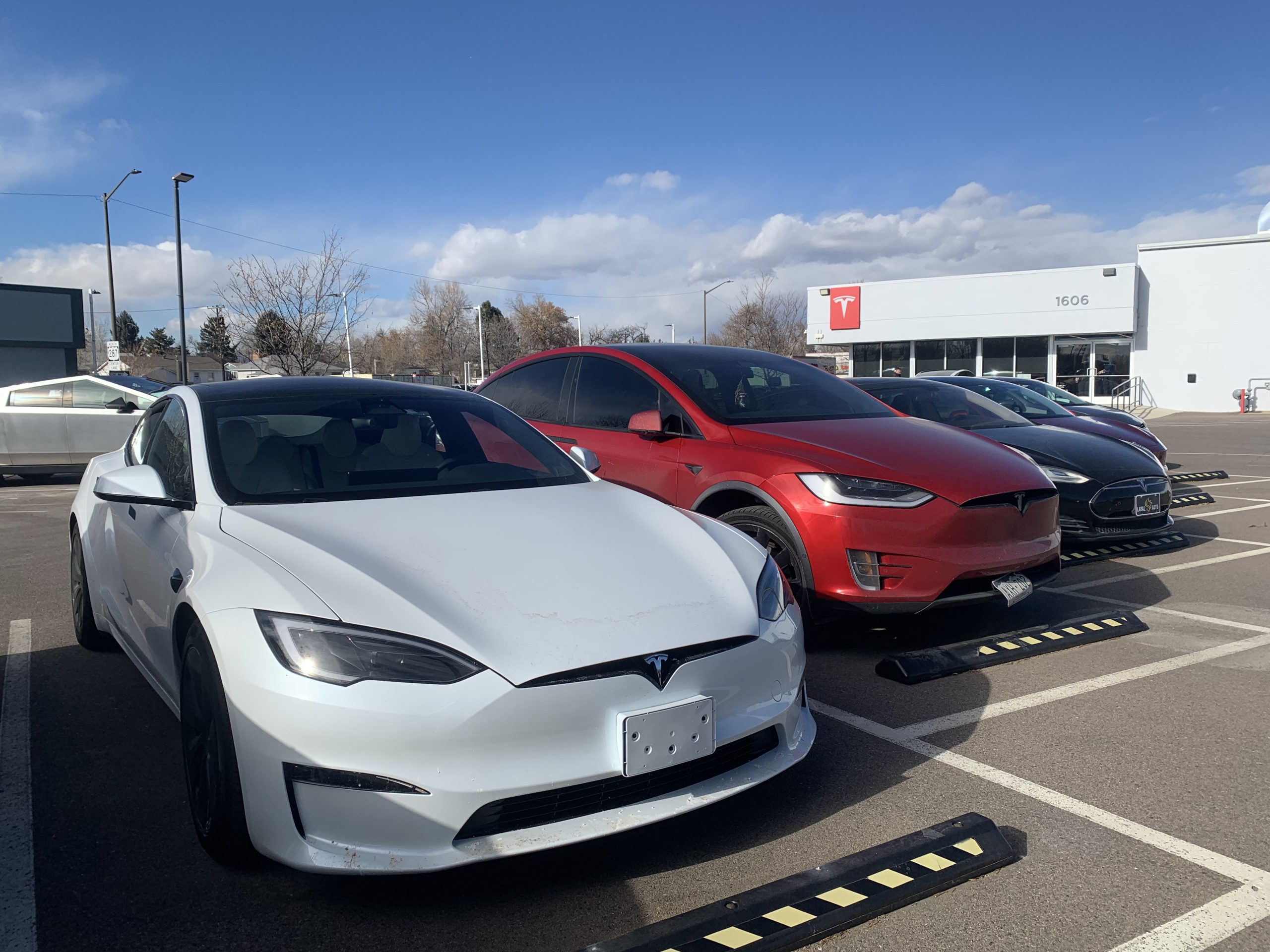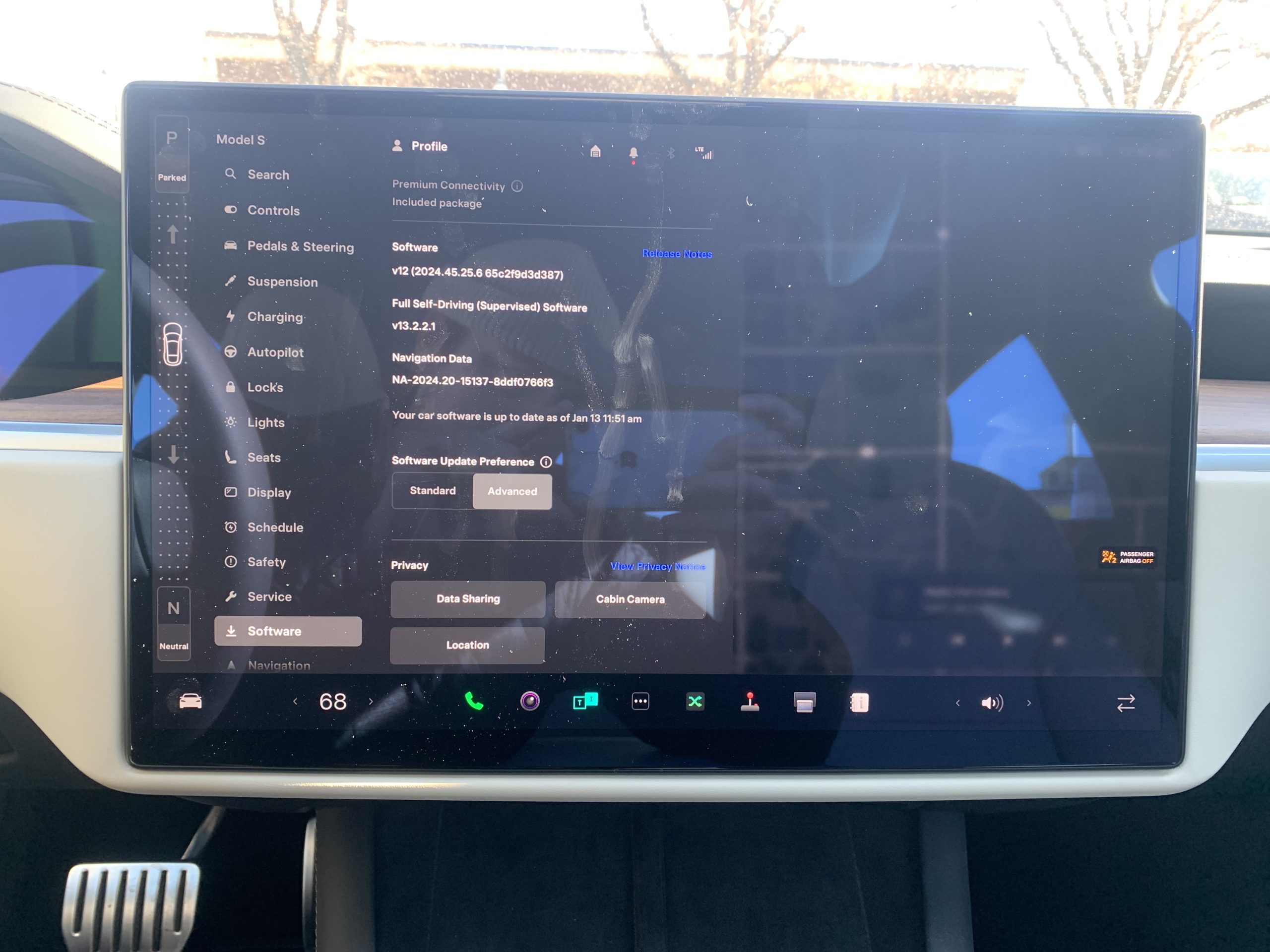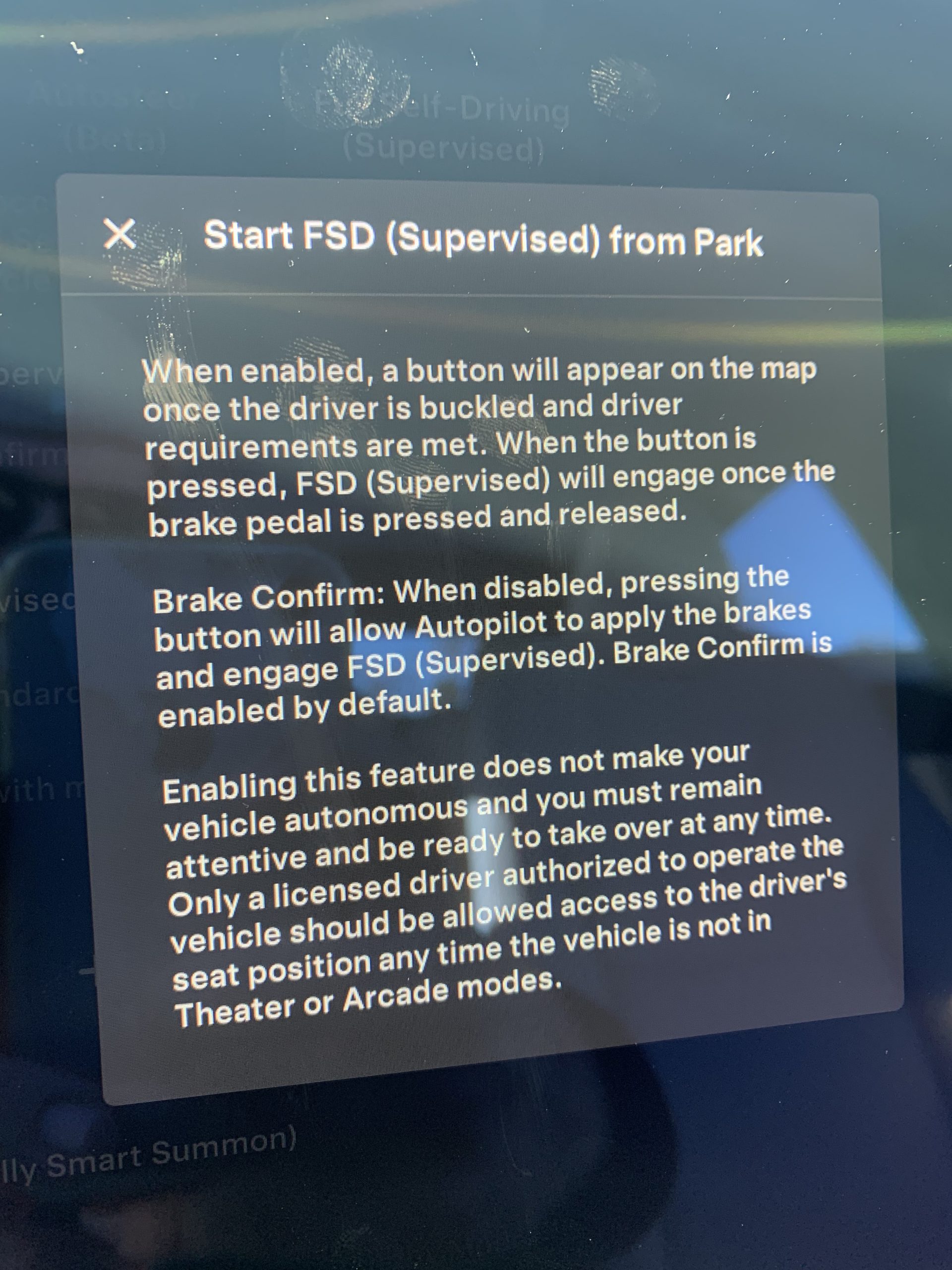I tried Tesla’s FSD Supervised on a demo drive—Here’s what I learned
Tesla’s Supervised Full Self-Driving (FSD) has been at the center of the company’s long-term strategy for years, and seeing as I’ve been covering the company and its competitors since 2020, I decided it was finally time to try it out myself.
The process of scheduling a demo drive was simple: I scheduled it online through Tesla’s test drive page, and because I was hoping to focus on FSD, I shot an email over to the Loveland team letting them know that I was coming and was planning to try the software out. I got a quick response, in which one of the advisors offered to schedule me for an extended demo drive, effectively giving me a three-hour window to try out FSD Supervised.
On Monday, I headed out from my house in Fort Collins, Colorado, to the next town over, Loveland, to try Tesla’s latest FSD Supervised version available. While I initially scheduled a demo drive for a Model Y with FSD Supervised v13.2.2, one of the Tesla advisors informed me that there was also a Model S on-site with version v13.2.2.1, so I elected to test that one instead.
After getting a quick rundown from the advisor on the Model S, my demo drive officially began. I typed my first destination into the navigation system, pressed and held the blue “Start FSD (Supervised)” button, and off I went.


Tesla’s FSD Supervised: autonomy is definitely on the way
Perhaps many people have this experience when trying FSD out for the first time, but right off the bat, I found myself laughing at how it worked and a little scared that it would make a mistake. This Model S was now driving me out of the Loveland Tesla parking lot to a nearby Target, through busy parking lots, turns and lane changes, and it was pretty uncomfortable at first not to be the one making the maneuvers—let alone the fact that no person was making these maneuvers, but rather it was the vehicle doing it on its own.
I felt like an anxious passenger—my feet pressed firmly on the floor in distrust and disbelief—only I was sitting in the driver’s seat. I really couldn’t do much but laugh at how strange the experience had felt so far.
Then, not long after my first trip, something interesting happened.
My mindset slowly shifted from fear to trust with each correct maneuver, and I managed my first few drives without disengaging at all, offering a true testament to how well FSD Supervised performed on this test. Granted, I went in without too much of a plan and wasn’t targeting fringe cases or particularly tough maneuvers; I just wanted to see if this car could drive me around for a few hours, and to feel what it was like to demo FSD Supervised as a newcomer.
It’s worth noting that I did most of my driving in FSD’s Chill mode, though I also tested a few drives in both Standard and Hurry. Personally, I think I would probably keep it in Chill mode most of the time, as it’s the most similar to how I drive of the three.
Below are a few moments from the drive that show some of the system’s capabilities, even turning onto busy roads that would be difficult for a human driver.

Tesla’s FSD Supervised reverses out of a parking spot… and we’re off
A simple reverse out of a parking spot, a good start! pic.twitter.com/TIx2yDmSxT
— TESLARATI (@Teslarati) January 15, 2025
Tesla’s FSD Supervised takes a few left turns onto busy roads
Another busy left turn – “FSD handled this busy turn with ease.” pic.twitter.com/SncR0Kh7ar
— TESLARATI (@Teslarati) January 15, 2025
Another left turn during a somewhat busy time of day – “I was a little scared, not going to lie, but FSD handled it well.” pic.twitter.com/WNunR05C3h
— TESLARATI (@Teslarati) January 15, 2025
Tesla’s FSD Supervised tackles a two-lane roundabout and parking lot
Roundabout? No problem! – “A two-lane roundabout that FSD handled pretty comfortably.” pic.twitter.com/X9QJIVXb6z
— TESLARATI (@Teslarati) January 15, 2025
Left-hand turn out of a parking lot – “It was pretty busy in there but it was well handled, the car navigated easily through the intersection just as I would have.” pic.twitter.com/Kzxb0aYtFN
— TESLARATI (@Teslarati) January 15, 2025
READ MORE ON TESLA’S FSD SUPERVISED: Tesla Cybertruck receives FSD (Supervised) v13.2.4 update
The temptation not to pay attention, and my most critical disengagement
Elon Musk and others have talked up FSD Supervised v13 since its release, as well as claiming that unsupervised driving is just around the corner. While it does feel closer than ever after years of reporting on small tweaks, improvements and developments, I think it’s also worth emphasizing again that the system still requires the driver to pay attention, even though it’s tempting to believe that it can handle all the driving by itself.
As I drove more and more, or rather as the car drove me, I became more comfortable trusting that FSD Supervised was going to make the right decisions, which it did about 99 percent of the time. I was lulled into somewhat of a false sense of safety that almost had me believing the vehicle didn’t need to be supervised, but that 1 percent of the time (maybe even less) that it did get confused still required my input.
I only had a few interventions for the whole experience, but one in particular had me a little scared after having become a little complacent and too trusting. As you can see in the video below, FSD Supervised was looking to merge into the right lane, when two vehicles slowed down. The Model S attempted to change lanes anyway, requiring me to overtake the wheel and keep driving straight.
Our first bit of adversity – “This was the most dangerous intervention I faced (I only had about three the whole time). FSD was trying to merge right, but the vehicles in that lane slowed down, and the car didn’t seem to understand what was going on. It started merging into the… pic.twitter.com/hJUBnCAjd2
— TESLARATI (@Teslarati) January 15, 2025
Besides the quick moment of fear in deciding I needed to take the wheel, it really was not a big deal once I regained control. It was actually a good wake-up call: this system still needs to be supervised, even if it makes fewer and fewer mistakes with each new version and feels like a solid human driver for the vast majority of the time.
I had a few other disengagements on my drive, mostly when the vehicle seemed to get confused about uncommon traffic circumstances or in confusing parking lot scenarios without clear signage. However, these moments made up a very small portion of my experience, and I can only imagine what another couple of years of development will do.
Tesla’s FSD Supervised: still needs supervision, but I got a good glimpse into a future of autonomy
All in all, I really enjoyed trying out FSD Supervised and I hope to do it again sometime. Additionally, I’d recommend trying it out to anyone, especially if you’re interested in seeing where driving tech is headed.
While I definitely got a glimpse into the future potential for fully autonomous driving, I also think it still requires supervision, even if just for those very seldom moments where the system gets confused. The margin for error with driving safety is obviously extremely low, though I do believe Tesla will eventually make good on its aim to make this system better than human drivers in time—and it already feels pretty close the majority of the time.
I hope to do this again sometime soon, and a major shout out to the Tesla Loveland team for making the experience smooth and for answering all my questions along the way.
What are your thoughts? Let me know at [email protected], find me on X at @zacharyvisconti, or send us tips at [email protected].
Tesla employees are performing autonomous FSD trials, CEO Elon Musk says
Need accessories for your Tesla? Check out the Teslarati Marketplace:
- https://shop.teslarati.com/collections/tesla-cybertruck-accessories
- https://shop.teslarati.com/collections/tesla-model-y-accessories
- https://shop.teslarati.com/collections/tesla-model-3-accessories
The post I tried Tesla’s FSD Supervised on a demo drive—Here’s what I learned appeared first on TESLARATI.
Source: https://www.teslarati.com/tesla-fsd-supervised-demo-drive/
Anyone can join.
Anyone can contribute.
Anyone can become informed about their world.
"United We Stand" Click Here To Create Your Personal Citizen Journalist Account Today, Be Sure To Invite Your Friends.
Before It’s News® is a community of individuals who report on what’s going on around them, from all around the world. Anyone can join. Anyone can contribute. Anyone can become informed about their world. "United We Stand" Click Here To Create Your Personal Citizen Journalist Account Today, Be Sure To Invite Your Friends.
LION'S MANE PRODUCT
Try Our Lion’s Mane WHOLE MIND Nootropic Blend 60 Capsules
Mushrooms are having a moment. One fabulous fungus in particular, lion’s mane, may help improve memory, depression and anxiety symptoms. They are also an excellent source of nutrients that show promise as a therapy for dementia, and other neurodegenerative diseases. If you’re living with anxiety or depression, you may be curious about all the therapy options out there — including the natural ones.Our Lion’s Mane WHOLE MIND Nootropic Blend has been formulated to utilize the potency of Lion’s mane but also include the benefits of four other Highly Beneficial Mushrooms. Synergistically, they work together to Build your health through improving cognitive function and immunity regardless of your age. Our Nootropic not only improves your Cognitive Function and Activates your Immune System, but it benefits growth of Essential Gut Flora, further enhancing your Vitality.
Our Formula includes: Lion’s Mane Mushrooms which Increase Brain Power through nerve growth, lessen anxiety, reduce depression, and improve concentration. Its an excellent adaptogen, promotes sleep and improves immunity. Shiitake Mushrooms which Fight cancer cells and infectious disease, boost the immune system, promotes brain function, and serves as a source of B vitamins. Maitake Mushrooms which regulate blood sugar levels of diabetics, reduce hypertension and boosts the immune system. Reishi Mushrooms which Fight inflammation, liver disease, fatigue, tumor growth and cancer. They Improve skin disorders and soothes digestive problems, stomach ulcers and leaky gut syndrome. Chaga Mushrooms which have anti-aging effects, boost immune function, improve stamina and athletic performance, even act as a natural aphrodisiac, fighting diabetes and improving liver function. Try Our Lion’s Mane WHOLE MIND Nootropic Blend 60 Capsules Today. Be 100% Satisfied or Receive a Full Money Back Guarantee. Order Yours Today by Following This Link.






